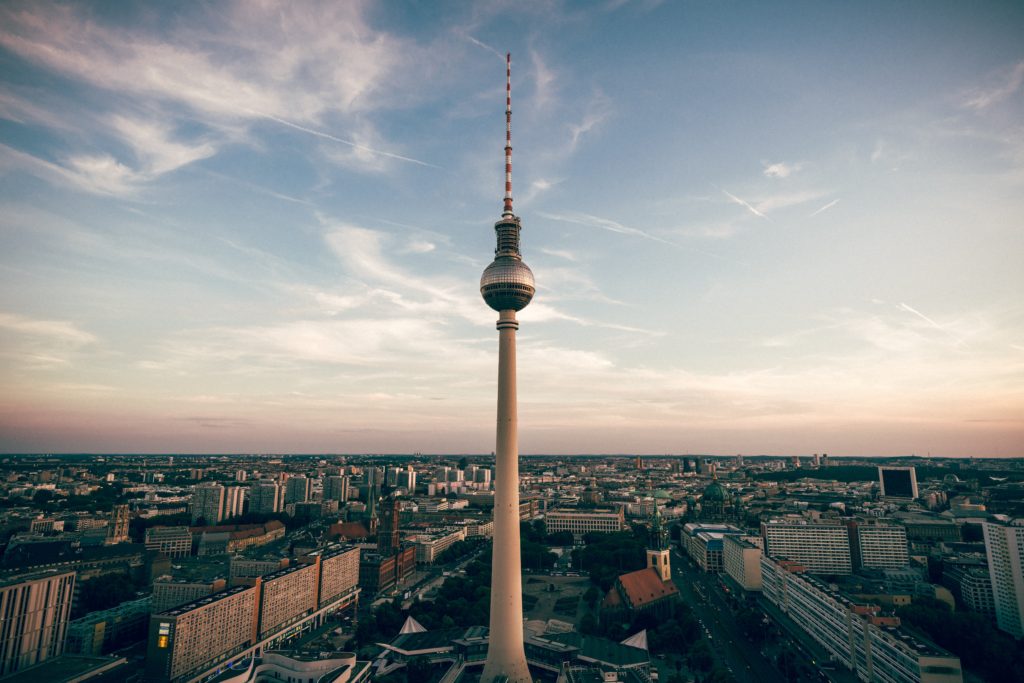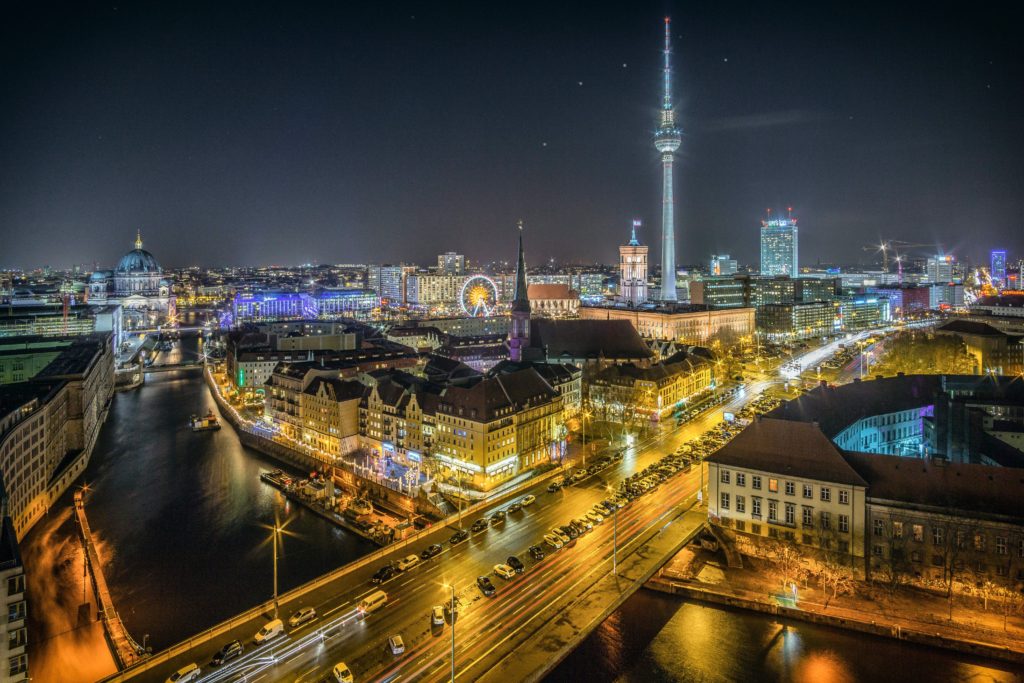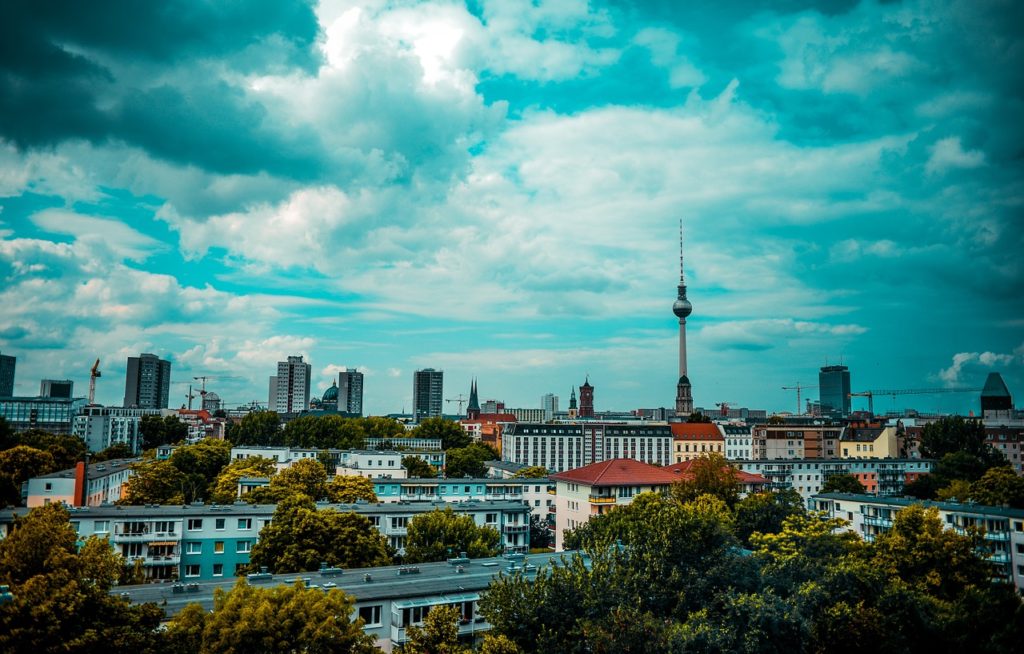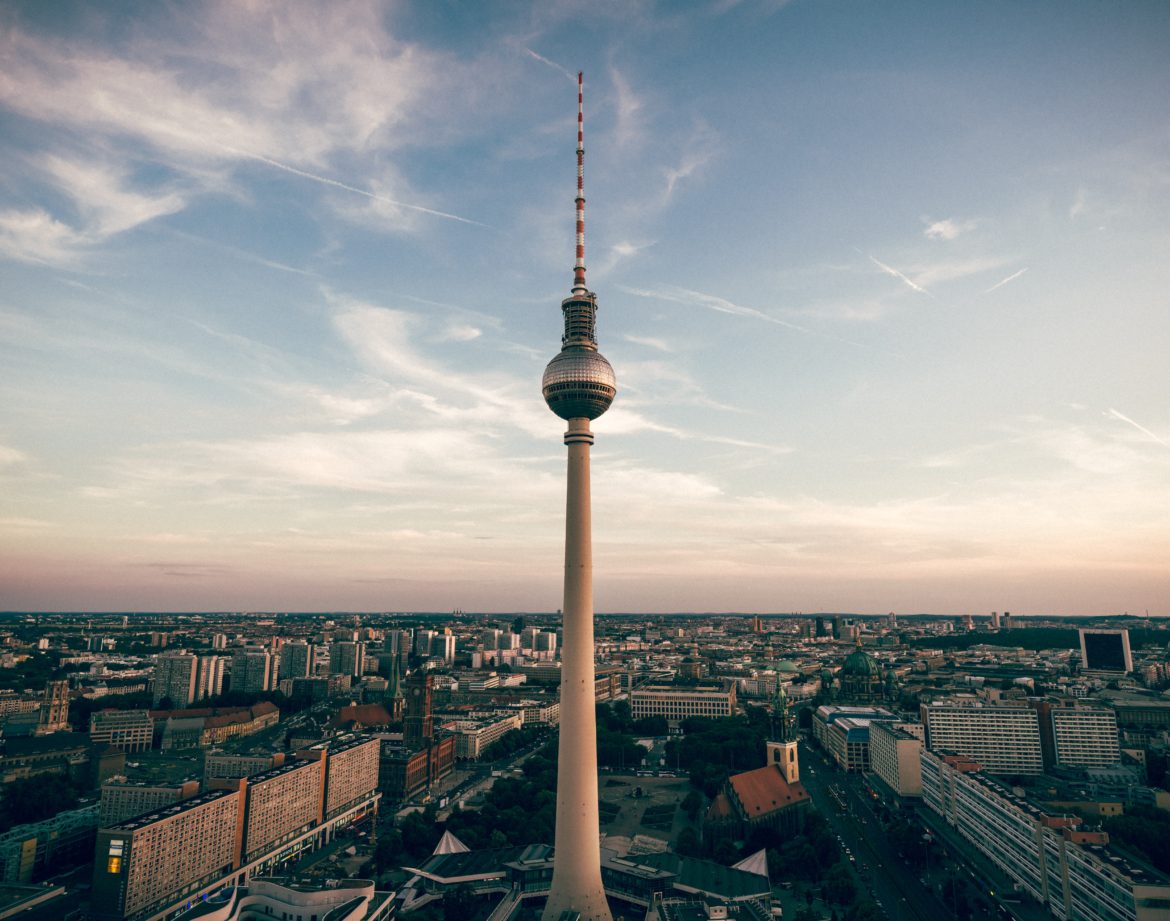Best Travel Guide for Berlin in 2022

Berlin is the most charming, populous city and capital of Germany. The city is present at the heart of North Germany’s plain. Berlin is a city defined by sharp contrasts. It is also a modern massive city nine times the size of Paris in terms of geography. It has new and exciting things to see and an underlying sense of humor. It makes it a one-of-a-kind place to go.
This sprawling city also has a wild side, with a lot of nightlife at the heart of it. If you want to drink, there are places with cabaret shows, swanky speakeasies, and clubs where people can party for 48 hours at a time. People who live in this city have made it look good with parks, good food, a good food scene from other countries, and an elegant style that local designers have created.
As far as I can tell, Berlin is not a very pretty city when compared to the whole of Europe, at least not on the surface. However, it’s one of the most interesting. In history and drama, it has a lot of beauty. In the twenty-first century, it has new energy because it has a strong backbone and a big heart.
Why should you visit berlin?
Berlin is a city full of museums, delicious beer, cultural sites, creative people, an unimaginable past, and crazy nightlife. It’s also known for its independence, creativity, and grungy calm attitude. It is the only one in the world of its type. Berlin has a lot of green space, swimming lakes, and more than 2,500 public parks and gardens. It gives residents and visitors a taste of nature.
Berlin is a must-stop for every musician who is on the road. The most famous actors always sell out their shows there. To make people dance, the best DJs in the world come to Berlin. In addition to the Soviet Memorial in Trep tower Park, the East Side Gallery, the Stasi Museum, and the Book Burning Square, Berlin has been through a lot, and its history is clear.
While Germany isn’t known for its food, Berlin has about 14 Michelin-starred restaurants, is one of the best cities in Europe for vegans, and serves hearty lunches for less than €5. Berlin has a large Turkish population and is a popular destination for ex-pats from all over the world, making it a fascinating mix of language, culture, and food. Besides, most people speak English so that visitors won’t get lost.
A Brief History of Berlin
The city is present in the North German Plain, at the crossroads of an east-west commercial and geographic axis that helped establish it as the capital of the kingdom of Prussia and subsequently of a unified Germany beginning in 1871. Berlin’s past splendor ceased in 1945, yet the city survived World War II’s devastation. It was reconstructed and went on to demonstrate incredible economic and cultural growth.
Following the war, Germany’s division placed Berlin wholly within the borders of the German Democratic Republic (GDR, or East Germany). The city itself reflected the national division East Berlin was East Germany’s capital, while West Berlin was a Land (state) of the Federal Republic of Germany (FRG, or West Germany). West Berlin’s isolation was furthermore substantial by the 1961 construction of the Berlin Wall.
Berlin’s enclave status made it a constant focal point of conflict between Eastern and Western powers and a symbol of Western living for 45 years. In late 1989, the collapse of East Germany’s communist rule — and the subsequent dismantling of the wall unexpectedly revived the potential of Berlin replacement as the all-German capital.
That status was put back in 1990 as part of the unification deal, and Berlin has designated a state, one of the sixteen that comprise Germany. These developments hailed the city’s re-establishment as a center of European culture and commerce, 344 square miles in size (891 square km).
How to get to and around berlin?
Getting to the place:
By Air
Berlin is an easily accessible city, and you can reach it here through its airport. The only airport of the Berlin is the Berlin Brandenburg Airport (BER), located about 16 miles south of the city center in Schonefeld. Berlin Brandenburg Airport operates more than 75 airlines out of it.
The airport connects to the city via Regional-Express (RE), Airport Express (FEX), and rapid-city (S-Bahn) trains, all run by Deutsche Bahn, or DB. you can book some best budget flights to Berlin via www.aviasales.com
Getting to and from the place:
The U-Bahn:
The U-Bahn or subway system is the most convenient and efficient method to get around Berlin. It consists of ten lines and 173 stations. The iconic yellow U-Bahn trains depart every five minutes during the day. They leave in 10-minute intervals at night. Tickets are also valid on all S-Bahn, bus, and tram lines at the Transport Association Berlin-Brandenburg VBB.
S-Bahn:
The S-Bahn is a suburban train network consisting of 15 lines and over 170 stations. It is mainly above ground in the city center.
Trams & Metrotrams:
Up to twenty tram routes connect the eastern portion of Berlin to the U-Bahn network. The distinction between trams and metro trams is frequency, with the latter operating more frequently.
Buses:
Metro buses M11 to M85 operate 24 hours a day. The suburbs and the city center connects by day bus lines 100 to 399. Night buses – denoted by an N, cover day bus and U-Bahn lines that do not operate overnight.
Bicycles:
Thanks to firms like Nextbike and the Donkey Republic, bike-sharing is a practical and eco-friendly way to move around. While Wheels, Jump, and LimeBike all offer electric bike rentals,
Taxis:
Berlin’s public transportation system is fantastic and our recommendation. Nonetheless, if you prefer to travel by automobile, taxis are plentiful.
Top 10 Things to Do in Berlin:

1. Brandenburg Gate
Brandenburg Gate is present one block south of the Reichstag Building. It is often regarded as Berlin’s most iconic monument, gleaming like a beacon of liberty and reunification following four decades of Cold War conflict.
2. The Memorial of the Murdered Jews of Europe
The Memorial of the Murdered Jews of Europe, designed by architect Peter Eisenman and engineer Buro Happold, pays tribute to the Holocaust’s Jewish victims. It’s a painful and vital reminder of what happened and the requirement of all visitors.
3. Tempelhofer Feld
Tempelhofer Feld, a former abandoned airfield that transformed into a 355-hectare public park, is the quintessential Berlin mashup of past and contemporary. You may stroll, cycle, or skate down the concrete runways where WWII dive bombers landed, as dogs chase frisbees and bikini-clad Berliners sunbathe just feet away.
4. East Side Gallery
What once was a symbol of division today embodies the city’s spirit and perseverance. The 4,318-foot-long East Side Gallery in Friedrichshain is perched along the Spree River’s banks and features a variety of vibrant murals painted on the remaining portions of the Berlin Wall. It’s a lovely metaphor that screams Berlin.
5. Reichstag Building
In Berlin’s case, the Reichstag Building has seen several incarnations. Today, it once again serves as the home of the German parliament. Admire the neo-Baroque structure or reserve a spot within the Sir Norman Foster-designed glass dome from the outside.
6. Berghain
Berliners adore partying. As a result, there are numerous after-dark venues where you may do precisely that. However, none come close to Berghain. The world’s most notorious nightclub invites guests to abandon their inhibitions, dance to techno sounds, and succumb to every debaucherous impulse.
7. Museum Island
A cluster of five renowned museums is present on a small island in the Spree River. Museum Island is a UNESCO-listed, architecturally stunning complex that is a must-see for any cultural lover.
8. Potsdamer Platz
Potsdamer Platz was formerly Europe’s busiest square, but it was destroyed during WWII and later partitioned by the Berlin Wall. Following German reunification, it became Europe’s largest construction site. It transformed into a showcase for the “new Berlin,” complete with skyscrapers, hotels, cinemas, shopping malls, and the large central plaza.
9. German Cinematheque
Known more widely as the Film Institution, this museum offers a variety of festivals throughout the year. However, it is worth visiting for its unique interactive exhibitions on German movies. You can learn about German cinema history, experiment with historical filmmaking gear, delve into the mechanics of cinematic narrative, watch Nazi propaganda films, and even play your role in front of a green screen in the museum’s studio.
10. Checkpoint Charlie
Checkpoint Charlie was the most famous postwar border crossing in Berlin. Between former East and West Berlin, the original border post on Friedrichstraße still stands, complete with a soldier’s post and border crossing sign. The museum features exhibits on the Berlin Wall’s history and those who sought to flee to the West. Admission charges are 14.50 EUR.
Best Time to Visit Berlin:
Tales about Berlin’s traditionally long and hard winters used to send shivers down the spines of tourists even before they arrived but these days, freezing periods (which can still drop to -20) are not as severe, with temperatures typically rising above zero by mid-February.
In any event, the plethora of museums, galleries, and indoor attractions – not to mention the fantastic selection of cafés, pubs, clubs, and restaurants – give ample stimulation to counteract the chill and darkness.
While spring and fall are lovely times to visit due to the abundance of gorgeous gardens and parks, summer is when the city truly comes alive, as residents take to the streets, rivers, and lakes and participate in the city’s numerous outdoor events.
Berlin Travel Costs:
Food
Food in Germany is highly affordable (and hearty). Meat is a staple of most meals, particularly sausages; in Germany, there are over 1,500 varieties of sausages. Stews, potato dumplings, and sauerkraut are other popular traditional choices. Breakfast consists of bread, cold meats, cheese, and hard-boiled eggs.
By and large, dining out in Berlin is reasonable. Currywurst, kebabs, and fast pizzas are available for less than 5.50 EUR each. Mustafas has the best kebabs. For around 5 EUR, you’ll get a filling, delectable lunch. Eating out at one of Berlin’s numerous Indian, Thai, or Turkish restaurants is the most affordable way to enjoy a sit-down dinner. Lunch at a Vietnamese restaurant costs approximately 5.50 EUR, whereas an entire course at an Indian restaurant costs about 6.50-9 EUR.
Thai Park (Preußen Park) is another inexpensive dining option. Thai residents flock to the park to prepare delectable and economical Thai cuisine throughout the summer. It began as a modest gathering of Thai community members but has grown into a massive food market with unique eats for around ten euros.
Hotel Prices
Beds in smaller dorms (4-8 beds) cost between 17-25 EUR a night, while dorms with ten or more beds cost between 13-18 EUR per night. A private room for two individuals ranges between 45 and 56 EUR per night. All Berlin hostels include complimentary Wi-Fi and lockers.
Additionally, most hostels provide complimentary coffee/tea and have an on-site kitchen and bar. Only a few hostels include breakfast; however, many charges 5-8 EUR for a breakfast buffet.
Budget Hotel Rates
Budget hotels range in price from 50 to 65 EUR per night. While complimentary Wi-Fi, flat-screen televisions, and private bathrooms are usual, complimentary breakfast is not. Numerous hotels provide a breakfast buffet priced between 8 and 12 EUR. Airbnb is available across Berlin, with individual rooms at approximately 30-45 EUR per night and fully furnished flats starting at around 60-75 EUR per night. Two-star budget hotels have prices between 75 and 100 euros per night. You can expect standard facilities like complimentary Wi-Fi, a television, air conditioning, and a coffee/tea maker. On Airbnb, private rooms cost between 40 and 95 euros per night, and whole residences cost between 100 and 150 euros per night. You can also book some budget hotels at www.aviasales.com
Where to stay in Berlin?

City West
City West is a beautiful alternative for where to stay in Berlin because it is consists of four boroughs (Wilmersdorf, Schoneberg, Tiergarten, and Charlottenburg). Due to the district’s proximity to the city center, it offers a diverse range of lodging alternatives in every price range, including some of the low-cost places to stay in Berlin.
While the nightlife is limited, City West boasts an excellent food scene, strong transportation connections, and a busy shopping district with everything from offbeat to upscale shops. If you’re looking for a less expensive alternative to the central business district without sacrificing convenience, City West is the ideal option.
Prenzlauer berg
Prenzlauer Berg is an upscale neighborhood populated by families, creative workers, and artists. It is a district that is both worked and lived in yet maintains an exceptionally relaxed attitude. There is a bohemian-bourgeois air here, which you can sense when strolling down cobblestone lanes and admiring wonderfully restored houses; this district is essential for its abundance of green spaces and outdoor areas, including Mauer Park, Helmholtzplatz, and Kollwitzplatz.
Schoneberg
Schoneberg is a sprawling neighborhood in Berlin’s southwest outskirts that offers something for every type of traveler. The area surrounding Viktoria-Luise-Platz is one of the greatest places in Berlin to stay for homosexual travelers, as it is home to a vibrant community.
Mitte
Mitte is the best neighborhood in Berlin to stay in; it is the best neighborhood in Berlin. With a name that translates as “middle,” it’s unsurprising that this district is pres in the heart of the city! Mitte is the most fantastic neighborhood to stay in Berlin for sightseeing, being only a stone’s throw from Berlin’s biggest tourist attractions, such as the Brandenburg Gate.
The district labels Berlin’s most iconic, with features like Museum Island (for your culture fix), Hackescher Markt (for wandering and exploring), Rosenthaler Platz (for the most outstanding pubs and cafés), shopping strip (for spending your money), and the ancient Berlin Jewish Neighborhood (for all you history buffs). You may be sure that, regardless of the type of traveler you are, you will be impressed and fascinated at every step in this vast and diverse district.
Friedrichshain
Friedrichshain is the district to stay in if you wish to be a community where vitality flows through the streets. This neighborhood, which exudes alternative, hipster, indie, and any other excellent attitude you can imagine, is a hotspot for bar-hopping and nightlife and home to the world-famous Eastside Gallery.
Although Friedrichshain serves as a hipe and youthful district, it is also an excellent location for families. Take a walk through the lovely Volkspark Friedrichshain park, and you’ll quickly see why.
Kreuzberg
One of Berlin’s most vibrant areas, Kreuzberg is also an option for those interested in experiencing the city’s alternative side. Kreuzberg is one of Berlin’s most popular districts, both for its central position and distinctive ambience.
With hipsters and tourists in equal measure, Berlin’s most fantastic pubs and clubs, an abundance of restaurants, various lodging options, and some stunning natural areas, this district is bustling with activity and exudes a captivating energetic vibe.
Potsdamer Platz
It is present near Berlin’s city center is one of the most incredible places to stay in Berlin, Germany. The plaza is a focal point for nightlife, dining, retail, and entertainment. Several of Berlin’s most prominent sights, including Checkpoint Charlie, the Brandenberg Gate, and Tiergarten, are within a few minutes walk.
Neukolln
Berlin’s up-and-coming neighborhood is present on the southwest side of the city. It is an excellent alternative for travelers looking for affordable housing in Berlin and has a more local character than more touristic districts. While ethnic food markets continue to exist, chic boutiques and vegan eateries have sprouted up in their wake.
Berlin has an abundance of parks, and Neukolln will be no exception, with its approximately 100-hectare Britzer Garten. To see some of Neukolln’s oldest structures, head to Richardplatz, formerly the heart of a small community that Berlin seized. The Christmas market here is also quite lovely.
East Kreuzberg
Berlin’s Kreuzberg district is well-known for its nightlife, and East Kreuzberg is no exception. It is one place where affordable hotels in Berlin are still available, as it is a bit gritty compared to some of Berlin’s more upscale areas. Görlitzer Park is the focal point of this region, covering 14 hectares and featuring a petting zoo, a lake, and sports grounds.
“Where should I stay in Berlin?” inquires the foodie. May want to seek a location near Markthalle Neun, an indoor food market including dozens of merchants. East Kreuzberg is located directly across the river from Friedrichshain, another famous nightlife district in Berlin home to The Wall Museum. East Kreuzberg is one of the most special districts in Berlin for budget tourists who want to be close to nightlife.
Frequently Asked Questions:
Is Berlin cheap for tourists?
Berlin is the most lovely and affordable capital city in Western Europe, making it an ideal destination for budget-conscious travelers and backpackers seeking world-class museums, economical food, exciting nightlife, and affordable lodging. Prices gradually increase, yet it is still possible to visit without spending a fortune.
What is the best time to visit Berlin?
May through September is the most incredible season to visit Berlin, as the weather is perfect for cafe sitting, park lounging, and relaxed city strolling. On the other side, winter is bitterly cold: temperatures typically hover between 20 and 30 degrees Fahrenheit.
Is Berlin crowded?
Berlin is a sprawling metropolis. As a result, most venues are seldom busy, even in the city center. Nonetheless, numerous stores and malls occur there.
